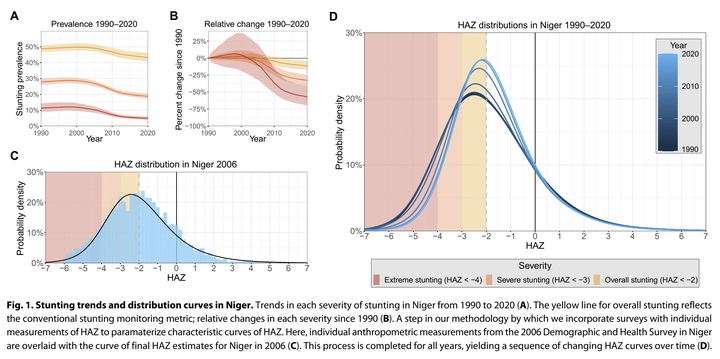Current dichotomous metrics obscure trends in severe and extreme child growth failure

Abstract
Historically, the prevalence of child growth failure (CGF) has been tracked dichotomously as the proportion of children more than 2 SDs below the median of the World Health Organization growth standards. However, this conventional “thresholding” approach fails to recognize child growth as a spectrum and obscures trends in populations with the highest rates of CGF. Our analysis presents the first ever estimates of entire distributions of HAZ, WHZ, and WAZ for each of 204 countries and territories from 1990 to 2020 for children less than 5 years old by age group and sex. This approach reflects the continuous nature of CGF, allows us to more comprehensively assess shrinking or widening disparities over time, and reveals otherwise hidden trends that disproportionately affect the most vulnerable populations.